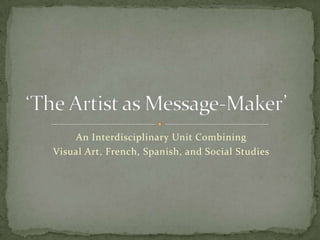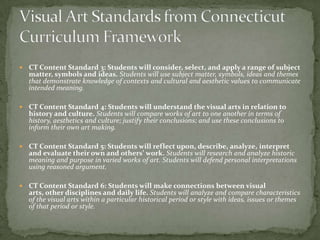This interdisciplinary unit combines visual art, French, Spanish, and social studies. Students will critically analyze artwork from the Spanish Civil War to understand how art can promote social change. They will consider an artist's role in society and interview community members about the impact of war today. Finally, students will reflect on their own views of war and violence and create an art piece expressing these views, incorporating text in French or Spanish.










